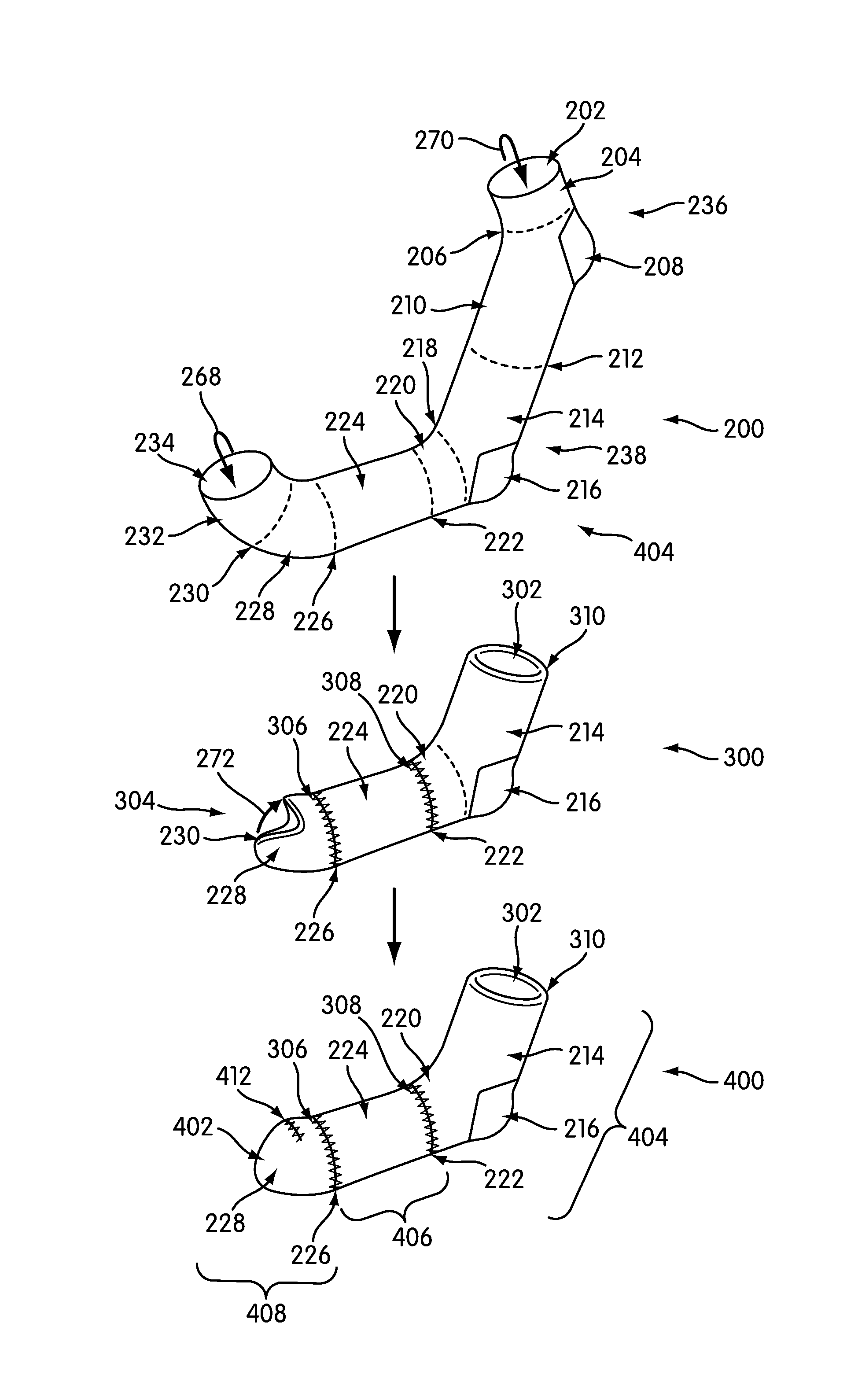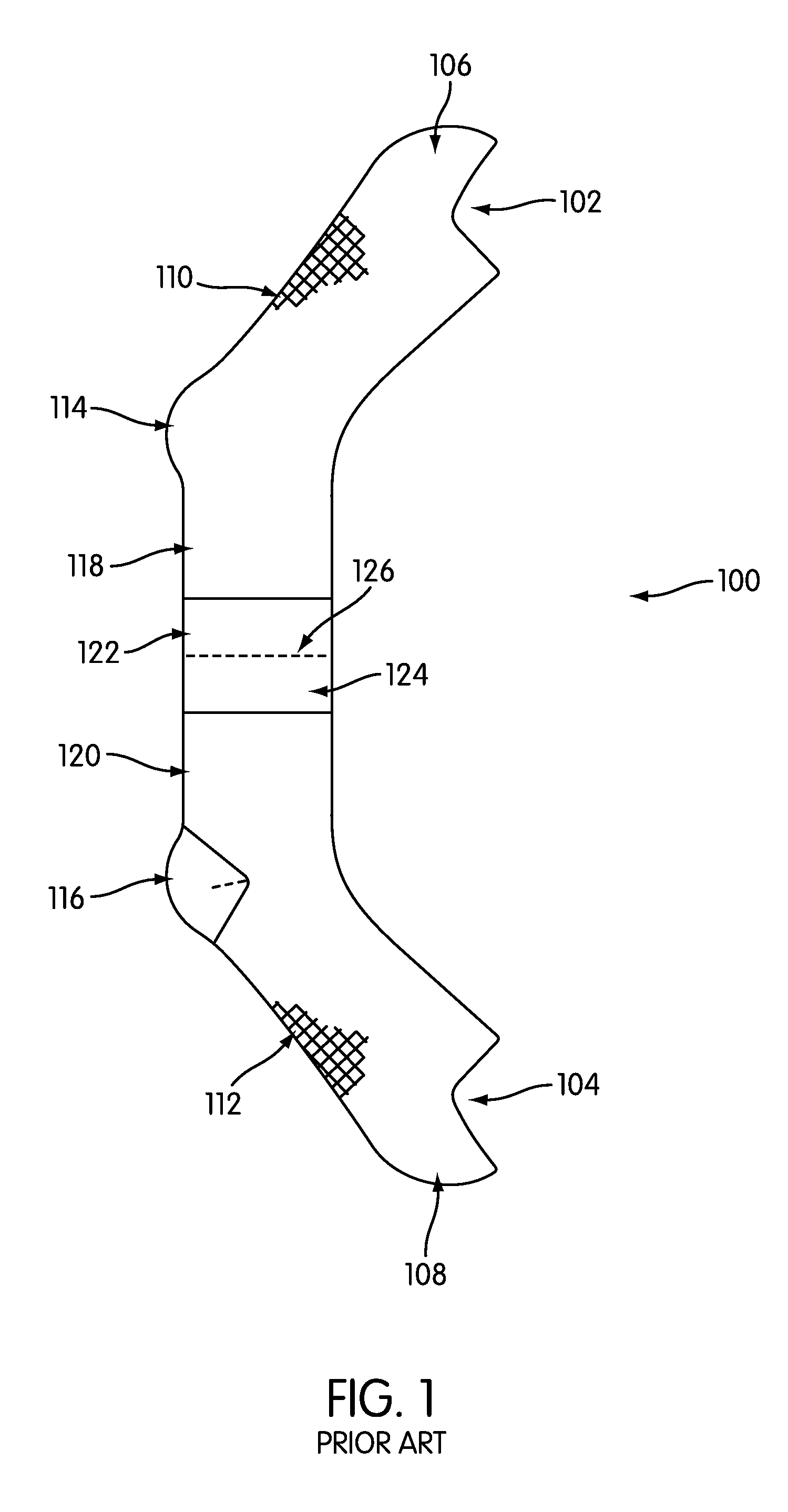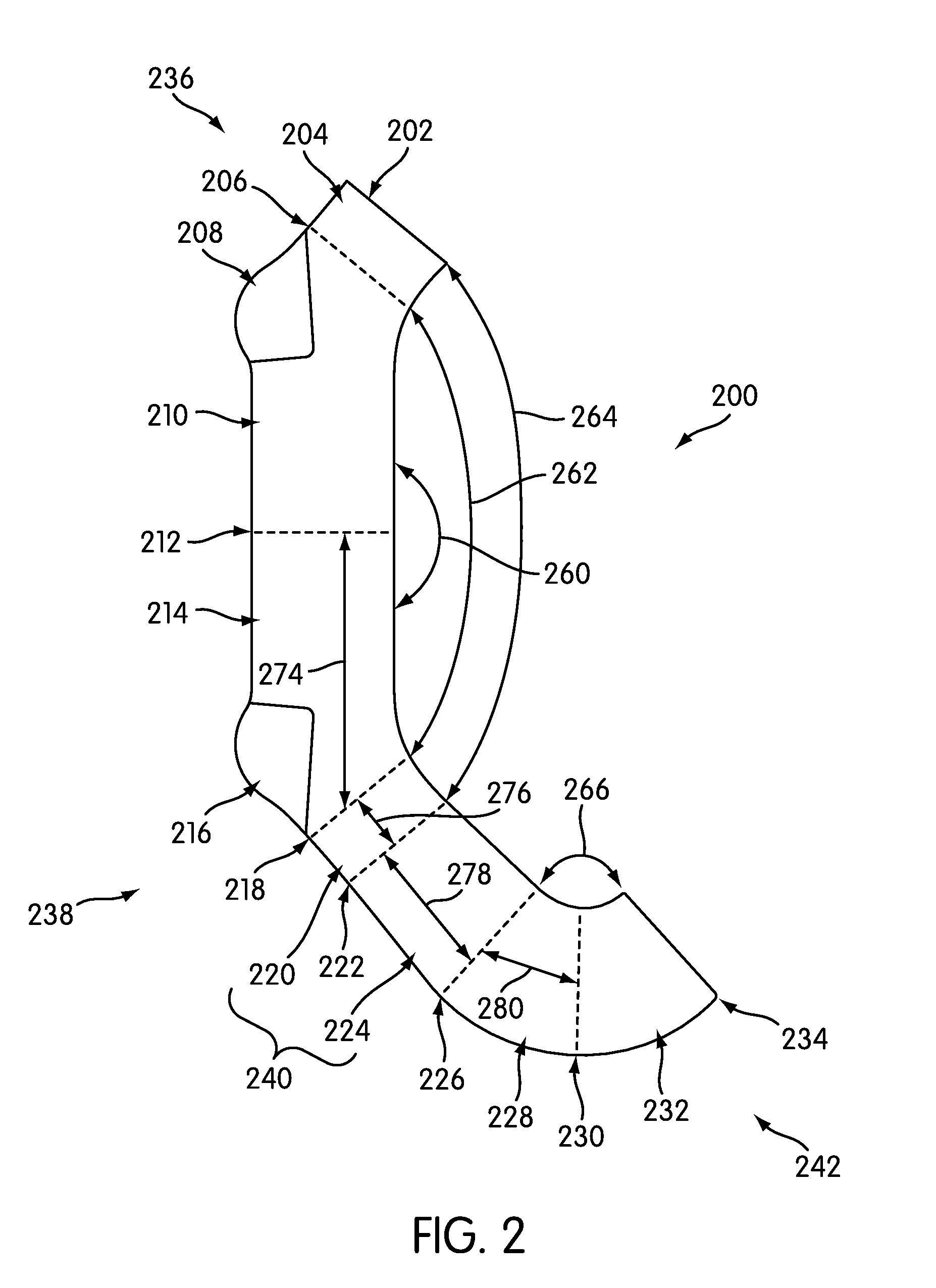Sock with Zones of Varying Layers
a technology of socks and layers, applied in the field of socks, can solve the problems of inconvenient wearing of more than one pair of socks, poor ventilation, and discomfort in wearing socks
- Summary
- Abstract
- Description
- Claims
- Application Information
AI Technical Summary
Problems solved by technology
Method used
Image
Examples
first embodiment
[0032]FIG. 2 shows a sock blank 200 in accordance with this disclosure. Sock blank 200 is a continuous tube of material, and may be used to manufacture a sock having zones of varying numbers of layers, as described below. FIG. 2 shows a two dimensional projection of the three dimensional cylinder-type shape that is the tube constituting sock blank 200. Sock blank may be continuously knit on a circular kitting machine, as is known in the art of sock manufacturing.
[0033]Sock blank 200 is symmetric with itself in two ways. First, sock blank 200 is symmetric about a first fold line 212 between a first end 202 of sock blank 200 and a first zone division line 222. Second, sock blank 200 is symmetric about a second fold line 230 between a second end 234 of sock blank 200 and a second zone division line 226. In certain embodiments, these symmetries allow the sock manufactured from sock blank 200 to achieve zones of two layers of material separated by a zone of a single layer of material.
[00...
second embodiment
[0055]FIG. 5 shows a sock blank 500. Sock blank 500 may be similar to sock blank 200 shown in FIG. 2 with respect to its first end, but differ with respect to its second end. A sock manufactured from sock blank 500 may include only two zones, instead of the three zones formed from sock blank 200.
[0056]Specifically, first, sock blank 500 may include a first portion 536 that may be substantially the same as first portion 236 in sock blank 200. Namely, first portion 536 may include a first end 502 of sock blank 500, a first arch portion 504, a first heel division linen 506, a first heel portion 508, and a first ankle portion 510. First portion 536 therefore extends from first end 502 to fold line 512. Sock blank 500 may further include a second portion 538 that may be substantially similar to second portion 238 of sock blank 200. Second portion 538 may include second ankle portion 514, second heel portion 516, second heel division linen 518, and second arch portion 520. Second portion ...
fourth embodiment
[0079]FIG. 12 shows a sock blank 1200. Sock blank 1200 may be similar in some aspects to sock blank 500 as shown in FIG. 5. However, sock blank 1200 may include first portion 1236 that differs from first portion 536 of sock blank 500. In particular, first portion 1236 extends from first end 1202 of sock blank 1200 to fold line 1212. Instead of being tubular as in other embodiments discussed above, first portion 1236 in sock blank 1200 may be in the shape of a hollow semi-cylinder. Namely, first end 1202, side 1205 and fold line opening 1203 may all be open sides of sock blank 1200. Therefore, first portion 1236 may include first heel portion 1208 and first ankle portion 1210.
[0080]First portion 1236 may otherwise be symmetric with second portion 1238. Second portion 1238 may extend from fold line 1212 to zone division line 1222. Second portion 138 may include second ankle portion 1214. Second ankle portion may be partially symmetric about fold line 121 with first ankle portion 1210 ...
PUM
 Login to View More
Login to View More Abstract
Description
Claims
Application Information
 Login to View More
Login to View More - R&D
- Intellectual Property
- Life Sciences
- Materials
- Tech Scout
- Unparalleled Data Quality
- Higher Quality Content
- 60% Fewer Hallucinations
Browse by: Latest US Patents, China's latest patents, Technical Efficacy Thesaurus, Application Domain, Technology Topic, Popular Technical Reports.
© 2025 PatSnap. All rights reserved.Legal|Privacy policy|Modern Slavery Act Transparency Statement|Sitemap|About US| Contact US: help@patsnap.com



